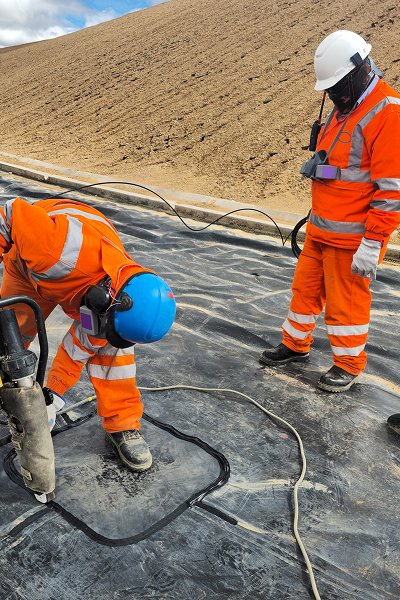Prefabricated vertical drainsConstruction
Prefabricated Vertical Drain (PVD), also known as Band Drain or Plastic Drain Board (PDB), is a new material used in soft soil foundation treatment. It is a long strip of drainage composed of a filter membrane, a core board, and a cladding layer. During construction, it is inserted into the soil using a dedicated plate insertion machine. Used in conjunction with preloading or vacuum preloading, it significantly shortens the consolidation time of soft soil foundations, accelerates the drainage of pore water, and improves the bearing capacity and stability of the foundation.


Structure and Material Characteristics
Material Performance: Thickness, Width, Tensile Strength, Drainage Capacity, Chemical Resistance
Typical Dimensions: 100 mm Width, 4–5 mm Thickness
Membrane Material: Polypropylene (PP), Polyester (PET) Non-Woven Fabric
Core Material: Polypropylene (PP) or Polyethylene (PE) with Longitudinal Grooves
Prefabricated Vertical Drain Pipe Structure
Core
Material: Polypropylene (PP), Polyethylene (PE), or other polymers
Features: Longitudinal drainage grooves or channels provide a low-resistance channel for water flow
Function: Ensures smooth longitudinal seepage and provides rigidity and strength to prevent breakage during pipe insertion
Working Principle
Prefabricated vertical drainage pipes function by combining "radial drainage + shortened drainage paths + accelerated consolidation":
Soft soils have low inherent permeability, making drainage difficult. Consolidation drainage of saturated soft soils primarily relies on natural upward or downward seepage paths, which require long distances and a long time.
PVD pipes provide new vertical drainage channels. After insertion into the soft soil, the filter membrane allows pore water to enter, while the longitudinal grooves in the core plate provide channels for water flow. The water is ultimately collected in the sand cushion or drainage ditch, where it is discharged from the soil.
Shortened drainage paths increase consolidation rates. Pore water in the soil no longer needs to penetrate long vertical distances, but instead flows radially to the nearest PVD pipe.
When a preloading load (such as a soil pile) or vacuum is applied to the surface, pore water pressure rapidly increases and is discharged through the PVD pipe, accelerating consolidation and settlement.


Application Scenarios
Prefabricated Vertical Drains (PVDs) are a highly effective soft soil treatment material, primarily suitable for low-permeability, highly compressible strata such as saturated soft soil, silty soil, silty clay, and alluvial deposits. Their core function is to accelerate consolidation, reduce settlement, and improve foundation stability. PVDs are particularly widely used in the following engineering fields:
Port and Terminal Engineering
Silty soils and silty clays are common in projects such as land reclamation, yard construction, and port terminal backfill. Natural consolidation takes decades, severely hindering port operations. By deploying PVDs and combining them with preloading or vacuum preloading, foundation reinforcement can be completed within months, quickly meeting construction and operational requirements.
Highway and Railway Engineering
Soft foundations on highways and railways in coastal or lake areas often suffer from insufficient bearing capacity, excessive settlement, and tight construction schedules. PVD can significantly accelerate foundation consolidation, enabling the roadbed to reach its design strength quickly, ensuring embankment stability, avoiding long-term uneven settlement, and ensuring driving safety.
Airport Runway and Storage Yard Projects
Airport runways and large storage yards require extremely strict control of differential foundation settlement. Traditional treatment methods are time-consuming and difficult to ensure uniformity. PVD combined with vacuum preloading can achieve uniform reinforcement over a large area, improving the bearing capacity and stability of the foundation and providing a reliable foundation for large aircraft and heavy-duty machinery.
Dam and Flood Control Projects
Damages are often located in soft or saturated soil environments, presenting risks such as seepage and slope instability. Accelerating consolidation through PVD can reduce post-construction settlement, improve the overall stability of the dam, and mitigate risks such as piping and leakage.


Prefabricated Vertical Drain (PVD), a key technology for modern soft soil foundation treatment, has been widely used in projects such as ports, airport runways, high-speed railways, highway embankments, and land reclamation due to its lightweight materials, convenient construction, high consolidation efficiency, and strong environmental adaptability.
PVD effectively shortens soil drainage paths and increases the number of drainage channels. Combined with surcharge preloading or vacuum preloading, it can significantly accelerate soft soil consolidation, shorten construction time, and improve foundation stability and bearing capacity.


